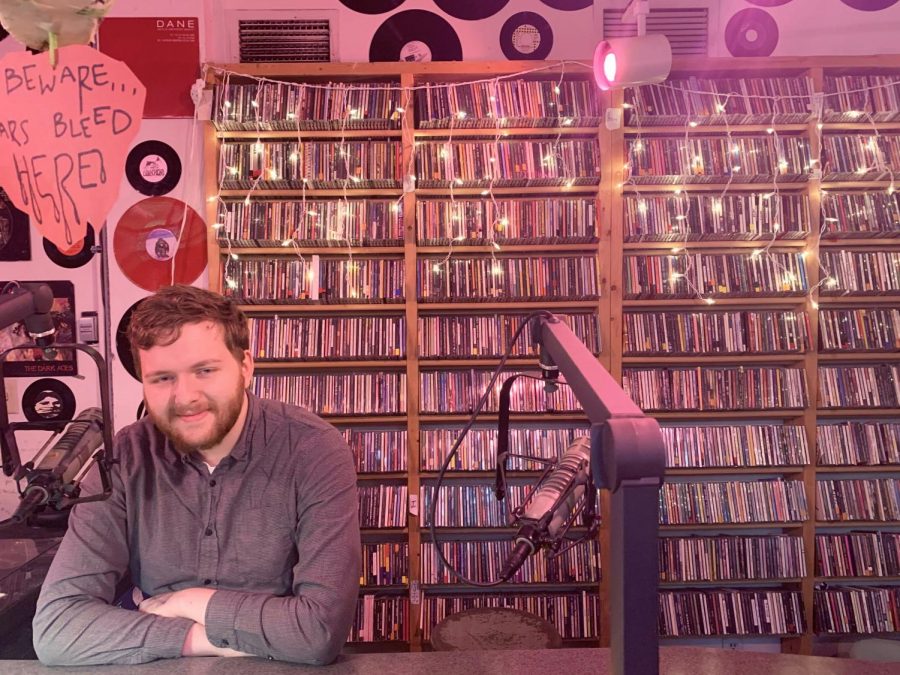DJ Knight LeBlond challenges audience perspective at WMCN
October 17, 2019
Audun Sundeen ’22, a staff member at WMCN 91.7, hosts “The Splendiferous Variety Symposium” on Saturday nights from 10:00 p.m. to 12:00 a.m. He goes by DJ Knight LeBlond.
The show features a random genre and theme every week, most of the music coming from Sundeen’s parents and his personal library of 16,000 and 4,000 songs respectively, which are stored in an external hard drive.
“A new week is a new discovery, from folk pieces to English electronic music of 1992,” Sundeen said.
Sometimes the show features country-specific music. For example, last week’s program was devoted to music in Spanish, mostly Cuban, and songs by a Spanish band, “The Pinker Tones.”
Sundeen was the first DJ in the United States to air a Pakistani band called “Peshawar,” that fuses together Pashtun folk and Western music. He learned about them through his uncle, who became friends with the band when visiting Pakistan.
“Most of the time people are less interested in country-oriented music,” Sundeen said. “They have preconceptions about what the music of a specific region is like. The majority thinks that scratching the surface, no matter how deeply, is enough to judge the entire country’s repertoire, especially if it’s a country they think they know a lot about.”
As a result, he usually curates a mixture of music from many different countries for his show. Usually listeners don’t know where the artists are from, especially with genres that exist primarily because of the Internet. This prevents coloring people’s opinions about the music.
“I want the audience to assess the music I play based on how they actually like it,” Sundeen said. “If they take a band they fancied from the show and decide they’ll listen to it in their free time and then figure out that the artists are from some specific country, I like that better. I think that’s a healthier way to enjoy the music, instead of grabbing a lot of songs from one particular country for the sake of a conversation topic.”
In Sundeen’s opinion, people also tend to have preconceptions about musical genres. He mentioned the unenviable fate of vaporwave, the music style, characterized by satirically appropriating the music from the 1980’s and 1990’s consumer culture.
“In 2017, vaporwave got memed and the majority has gained the idea that vaporwave is all the music slowed down, which is not the case,” Sundeen said. “Now when I say I’m going to play vaporwave on the radio, listeners get confused or even upset when I play weird mixed-and-matched disco music, which is something they don’t expect to hear. Not fulfilling people’s expectations is fun but also it can cause them to just not listen to my show.”
As a response to this situation, on his YouTube channel, he created a playlist that is entirely dedicated to vaporwave. However, the most popular of his YouTube playlists are the mood-focused ones, which have anywhere from 15,000 to 40,000 views. The playlist called “Calmness of Night” did particularly well.
The theme of calmness also appears in Sundeen’s WMCN show. He usually starts off at a medium volume level, moves towards a peak with some loud music and slowly eases down into quiet.
“I think this scheme works well because a lot of people listen to my show right before going to bed. They don’t want to listen to thrash music late at night, unless they’re at a party, in which case they’re not going to listen to my radio show anyway,” Sundeen joked.
He mentioned that among the benefits of airing after 10 pm at WMCN is the freedom to play explicit music and, as a result, he has a wider range of songs to choose from.
Sundeen affirmed that he does not aim to put a clearly defined social or political message in his show.
“I don’t want to make a stand on anything but a lot of people, especially from back home in Kansas City, will project their own social and political opinions on the music I play and automatically assume that’s what I was getting at,” Sundeen said. “I just want to give my audience an opportunity to experience the flow of music and to have fun with it.”













